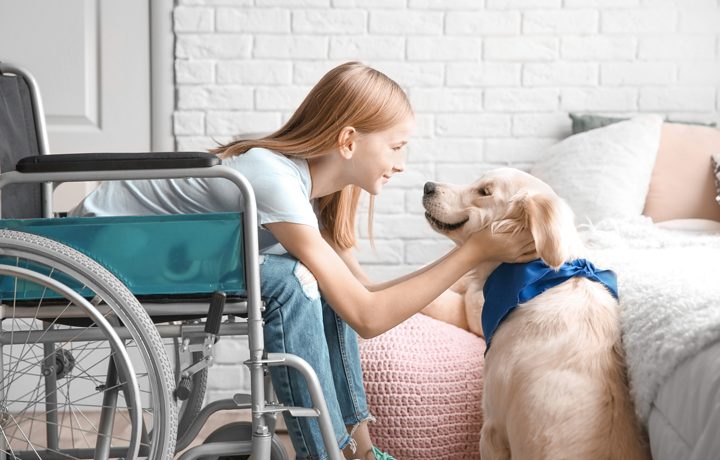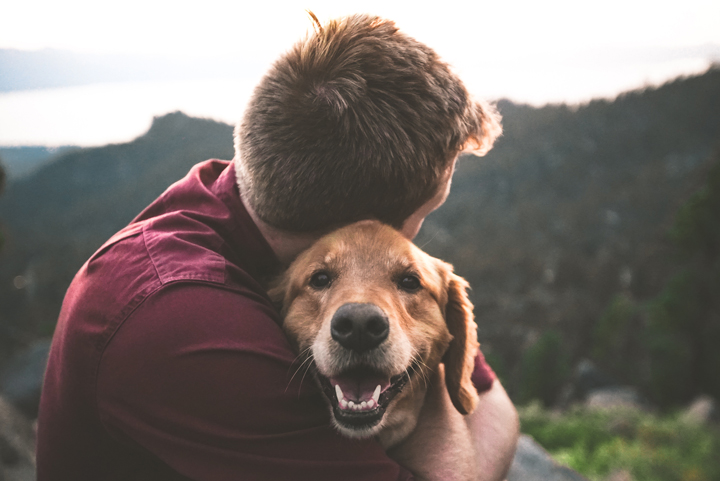Service Dogs: What They Are and What They Do

The definition of a service dog has recently come under a lot of scrutiny. This is, in large part, due not only the various types of service dogs, but also the confusion as to what differentiates a service dog from an Emotional Support Animal. Not every disability is one that can be seen, and service dogs provide their owners with specific assistance.
What is a service animal?
Right now, the Americans with Disabilities Act (ADA) only recognizes dogs as service animals. Under the ADA, a service animal includes “dogs that are individually trained to do work or perform tasks for people with disabilities.” This means the dog is specifically trained to assist its owner with disability-related tasks. They are working dogs. While most service dogs may have a vest or some form of identification that they are a service dog, this is not required.
In this case, the ADA strictly allows only two forms of questioning of the owner: (1) is the dog a service animal required due to a disability; and (2) what work or task the dog has been trained to do. The owner is not required to show medical proof of their need, nor are they required to demonstrate the dog’s line of work. In fact, it is illegal to ask for either of these things.
So, a service dog is a dog who is a working dog trained to perform specific tasks or work for their owner due to a disability.
What kinds of service dogs are there?
The list of types of service dogs grows as individuals navigate toward dogs for assistance and as individuals—trainers, handlers, and others–begin to see the different ways dogs can be trained to be of assistance. According to Anything Pawsable, an online resource for service and working dogs, there is not a comprehensive or universally accepted listing of types of service dogs. Instead, if they are trained for something specific, they become a service dog.
Service dogs for physical disabilities
Guide dogs for the visually impaired and hearing dogs for the hearing impaired are the types of service dogs most people are familiar with. A visual assistance dog guides their handler, and a hearing dog alerts their hearing impaired handler to specific sounds. This type of service dog, however, has grown, and also include the following:
Brace/Mobility Support
These dogs provide balance to their handler and must be large enough to support their handler. They tend to wear a specially-designed harness to better help with their assistance task.
Medical Assistance
This dog are trained in specific task work to assist their handler with a medical disability.
Seizure Alert/Response
This dog are trained to respond to their handlers seizures through specific tasks. These tasks can include providing pressure to alleviate symptoms, getting medication, or even altering another individual to call for help. A seizure alert dog alerts their owner of an oncoming seizure and can go into task mode accordingly. No gear is typically required for these particular dogs.
Wheelchair Assistance
These dogs are trained to assistance their wheelchair-bound handler through retrieval of objects, opening the door, and any other tasks the handler may need assistance with. While no specific gear is associated with this type of service dog, they may wear a harness to assist in pulling a chair or for better handle by their handler.
Service dogs for non-physical disabilities
Not all disabilities can be seen, whether physical or not. The National Alliance on Mental Illness estimates that 9.8 million adults in the United States “experiences a serious mental illness in a given year that substantially interferes with or limits one or more major life activities.” For these individuals, their service dogs could provide them with a higher ability to be independent. For other individuals, their disability may just not be visible to outsiders. Their dog can provide them the exact type of support they need for their disability.
Autism Assistance
These dogs are most often paired with children and are trained to provide tactile or deep pressure stimulation. They can also help the autistic individual in learning life skills and maintaining boundaries. These dogs do not have specific gear.
Diabetic Alert
These dogs are specifically trained to alert their handler when their blood sugar is at a dangerous level. They can be trained to call 911 if their handler is unconscious.
Medical Alert
These dogs are trained to tell their handler when a measurable physiological change is reaching dangerous proportions. This includes hormone levels and blood pressure.
Psychiatric
Just as the name suggests, these dogs assist their handlers with their psychiatric disability, including anxiety and PTSD. However, these dogs do more than provide comfort by their presence. They are trained in specific tasks that can alleviate symptoms or onset.
Why does this matter?
Just because a service dog does not have identifying gear does not mean they do not provide a service to their owner. On the flip side, if a dog seems a little too rowdy, it may be time to reevaluate that meaning of “service dog”. (Anything Pawsable provides some insight on how a service dog should and should not act in public.) But not every well-behaved dog is a service dog. Not even Therapy Dogs or Emotional Support Dogs count as service dogs, as these dogs are not trained in specific tasks. There can be confusion, though, and here’s why.
If your dog’s presence provides you emotional comfort because you suffer from, say, anxiety or depression, and you have a note from your mental health professional on how the dog helps alleviate your symptoms, your dog is an Emotional Support Animal (ESA). However, if your dog alleviates your symptoms and is also trained to do specific tasks, such as alert you to when you are going to have a panic attack so you can prepare yourself, then the dog is a Service Dog.
In the end…
There are a variety of service dog types. The public may not always be aware that a dog is a service dog. Service dogs, should be exceptionally well-trained, not only in their tasks but also in basic dog etiquette. It is important for others to remember that not all disabilities are visible. If an owner says their dog is working, that should be respected. If these dogs get distracted it could be very detrimental to their handlers.
In the end, service dogs work hard to provide assistance to their owners through specific tasks or work. They are not pets—they are necessities to that individual.










Leave a Reply